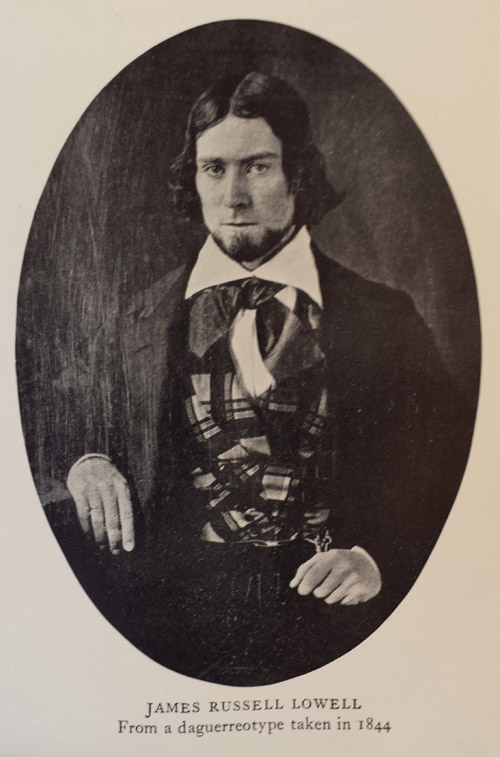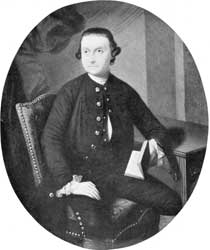The Poets Bowl
Home
 The Poets Bowl
The Poets Bowl
Lost for over 120 years & recently found.
The Poets Bowl by colonial silversmith Benjamin Burt is the
"second most valuable silver creation in colonial New England"
[only the "Sons of Liberty" Bowl by Paul Revere is considered to
be more valuable]. More importantly, the Poets Bowl represented
one of the "greatest love stories" in colonial America of two great
poets, James Russell Lowell and Maria White Lowell, as well as
the bonding of four of the most famous abolitionists in the pre-Civil
War era. Many credit the Poets Bowl with being a spark that
started the Civil War.


It also has the reputation of being one of the sparks that started
the Civil War-- much like the Sons of Liberty Bowl helped
to "spark" the American Revolution. All of the initials on the Bowl
were some of the greatest "politicians and agitators" of the day-- especially,
James Russell Lowell (the famous poet) and his wife, Maria White Lowell
(also a poet).
Lowell was later Minister to Spain and Ambassador to
Great Britain among his many other accomplishments.
The premier silversmith, Benjamin Burt was rated by
his silversmith and jeweler peers to be "the best" in colonial

America (even better than Paul Revere).
Evidence of this was when George Washington
visited Boston in 1789, all of the goldsmiths
and jewelers picked Benjamin Burt to lead
the group of goldsmiths and jewelers in the
"greeting" of George Washington. The extreme
"quality of craftsmenship" and "silver grade" by
Burt were known worldwide and in the colonies
he was sought after as "the best." Further, he tended to make
more special or "one of a kind" masterpieces for the Boston elite.
Burt was again asked by all of the goldsmiths of the day to lead
the memorial procession for George Washington in 1800.
The Poets Bowl is believed to be a one-of-a-kind
bowl made by Benjamin Burt for the Lowell family and the
exquisite engraving was believed to have been done by
Henry Pelham who did virtually all of the engraving for
Benjamin Burt and who was also the half brother of
John Singleton Copley (the distinquished colonial artist
that painted Benjamin Burt). This engraving exists on no
other bowls or objects produced by Burt and is considered
to be in "keeping" with the romance of the Poets Bowl and
the poets engraved on the Bowl. This may be
Pelham's best work "ever" on the Poets Bowl. James
Russell Lowell and Maria Lowell added the initials in 1846
for the "Whites" wedding. It is further known that Pelham
returned to Ireland in 1775, so that the decorative engraving
must have been added before that time.
Benjamin Burt's silver creations were much in demand
by the wealthy of Boston.
During the American Revolution, Burt served actively with
both the Massachusetts and New York Artilleries. This placed
him under the direct command of George Washington. Burt
was present as the battle of New York city under George
Washington and he also served under Washington at the
Yorktowne peninsula in the 2nd New York Artillery-- a
unit that distinguished itself in helping keep the British (under
Lord Cornwallis) trapped until the French fleet arrived in 1781.
His outstanding war service further earned him the great
admiration of his goldsmith peers.
William A. White, was editor and publisher of three prestigious
journals (the Excelsior, the New Englander, and the
Washingtonian). White also lectured throughout the U.S. and
was highly sought after due to his "magnetic and friendly"
personality (see initials "WAW" engraved on the Bowl). William
was the most active abolitionist of the four and fequently gave lectures
on abolition throughout the U.S. William was also a close friend and
mentor to Frederick Douglass and was often attacked with him by
pro-slavery mobs (see letter from Frederick Douglass to William
Abijah White written from Edinburgh, Scotland). In 1843, William
spent months traveling with Frederick Douglass and George Bradburn
throughout the country giving pro-abolitionist lectures and speeches.
White was also a state Republican Party chairman and had a
national reputation. This was "Lincoln's party" in later years.
White had been roommates with Lowell at Harvard and
introduced his sister, Maria, to Lowell at "White's Hill" in
Watertown, Massachusetts. Maria has been described as the
"prettiest girl in New England."
James Russell Lowell fell in love with Maria "on first glance"
and asked her father (a Bank President and cattle baron and one
of the wealthiest men in New England) for Maria's hand in
marriage and the father, Abijah White, refused him until he
could become "financially responsible." After Lowell's first
publication was successful-- the father changed his mind and
allowed the wedding. James and Maria lived in Elmwood,
where the President of Harvard University resides today.
The Poets Bowl was originally a wedding present to
William Abijah White and his wife Harriet Tilden Sturgis from
James Russell Lowell and William's sister, Maria White Lowell.
The Bowl grew to become famous as a "bond" of the group's
political and philosophical activities and was often passed
back and forth between the Whites and Lowells so that it
would be protected after some of the parties early deaths.
William and Harriet White had it until their early deaths and
then the Bowl was held by James Russell Lowell for a time, for
his wife Maria, but eventually he turned the Bowl back over
to the son of William and Harriett White, William Howard
White.
James Russell Lowell was deeply in love with Maria
(White) Lowell and always called her "ML" as a pet name.
The initials on the bowl are even more significant due to
these initials representing this extreme affection Lowell had
for Maria-- she is known to have inspired much of his
"romantic poetry" due to this almost obsession Lowell was
known to have had for Maria.
After Maria's early death at age 32, Lowell entered
a "deep depression" phase in his life and poetry and
often wandered through Elmwood and its surroundings
mumbling "ML why have you left me?" Lowell was
known to have considered suicide due to the untimely
loss of his "great love" Maria. James and Maria were
truely one of the greatest love stories of the ages and this
great love was evident in all of their "romantic"
poetry. "Great Little Watertown" c. 1930 by the
Watertown Historical Society is probably the best
reference material for this great union of James Russell
Lowell and Maria White and Elmwood and White's Hill.
All of the greatest poets and writers of the day would
gather at White's Hill in Watertown to discuss the great
causes of the day and poetry. This is where James and
Maria were first introduced by William White.
The Poets Bowl is a silver masterpiece created by
silversmith Benjamin Burt and was used by this famous group
of patriots and intellectuals from two of the greatest Boston blue
blood families of them all ( the Whites and the Lowells), as
a symbol of their unity of cause and purpose.
The Whites were descended from William White, the 11th
signer of the Mayflower Compact and the father of
Peregrine White, the first baby born in New England of
English descent. Uncommon to the rest of the passengers,
White had two man servants on board. White had a wife
on board named Susana and son named Resolved (who had
been born in Holland 5 years before the voyage to America).
During the late 18th century in colonial Boston, Abijah White,
a descendant of William White (of the Mayflower) became
one of the wealthiest men in colonial Boston and lived on
"White's Hill" in what is now East Watertown.
William Abijah White's portrait by the famous painter
William Page (the "American Titian") survives today
with the White family (direct descendants). The artist, Page,
was James Russell Lowell's best friend (next to William
White), and Lowell's first publication of poems was dedicated
to him. Notably, John White, a descendant of the Mayflower is
displayed prominently on the "Sons of Liberty Bowl," as well.
Notably, the Whites are also descended from John White who was
the grandfather of Virginia Dare of the lost colony in North
Carolina (1587-1589). The Whites are truely America's "first
family." They had the first child born in America twice.
Based on the purchase price of the Sons of Liberty Bowl by
the Boston Museum of Fine Art in 1949, the Sons of Liberty Bowl
has an estimated value of more than $4,500,000. The Poets
Bowl has an insurance value of $3,400,000 based on the 1949
purchase price of the Sons of Liberty Bowl brought forward.
The Poets Bowl was lost for over 120 years and was found recently in
an old family trunk that had valuables of Harriet Tilden Sturgis ( HTS
engraved on the Bowl). Harriet was the daughter of Nathaniel Sturgis--
the head of Russell & Co., the largest importer of opium in the
China trade in the 1800s and the wealthiest family in New England.
Her brother, Russell Sturgis, was the head of Barings Bank in London, and
John Hubbard Sturgis was the architect for the MFA in Boston.
(C) Copyright 2020 Poets Bowl
Please call for further information:
Roger White, Trustee
540-347-1050
All inquiries will be kept confidential.
Thank you.
Or Email:
poetsbowl@gmail.com
Copyright 2018 Poets Bowl. All rights reserved.